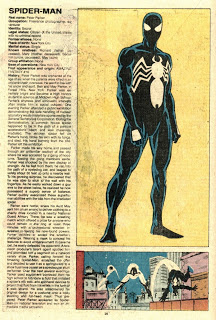Yamato: dogfights, themes and incarnations
As Integr8d Fix has played home to classic American comics of the 1970s and 1980s, I can't let the moment pass without regarding the manga versions of what we here call STAR BLAZERS. During the run of the program from October 1974 through March 1975, there were three Japanese comic books dedicated to SPACE BATTLE SHIP YAMATO, including one being written and drawn by the cartoon's director Leiji Matsumoto. In fact, in an interview from 1976 on starblazers.com, he credits the primary, proud Wave Motion Gun to a cannon in an earlier erotic comedy, SEXAROID, which he created in 1968.
The configurations of the fleet initially involved separate ships; in fact, a floating asteroid was the original concept, a high-tech vessel that could disguise as an undistinguished, though large, piece of space flotsam---or perhaps, a second one, modeled on the asteroid Icarus, which could fly with greater mobility. The decision to center the mission on the single ship, upon which the agile Black Tigers and various reconnaissance craft relies for deep space motion, also lends the Gamelons one great target.
Modeled on Rommel, the "Desert Fox" of World War II, General Lysis proves a most tenacious second-in-command to Desslock's efforts. After nearly sacrificing his base with the artificial sun attack near planet Balen, Lysis receives a stay of execution from Desslock. With his second chance at life, Lysis prepares the perfect ambush: the star system he chooses for their final confrontation also clouds the Argo radar with natural means. Then he employs a teleportation device called the S.M.I.T.E. gun that transports his multi-cruiser attack straight into firing range. Finally, Lysis uses the same means to put another bomb directly in the Argo's path without warning; this one bores into the aperture for the Wave Motion Gun, drilling deeply into the ship before a timed explosion!!
The tactics of the Rainbow Galaxy battle stand out for their intrigue, as each confrontation is so different. Most potently, the deaths so stealthily hidden by American TV standards in 1979 are opened to the light in a a solemn moment aboard the Argo's damaged deck. The theme I refer to as "We Will Return" played during Captain Avatar's toast with Wildstar to their receding home, as the Argo left Earth's home solar system. That theme plays as the caskets launch into the outer reaches of space, so far from the home for which these young people gave their lives. It is a testimony to the price of violence and the sad necessity of sacrifice when war cannot be evaded.
No less powerful or exciting is the all-or-nothing stance into which Leader Desslock has thrown his desperate empire, which he breaks upon the hull of the "ghost ship." It's worth noting the ship originally sank already; it's quickly referenced early on as the Yamato, once the mighty floating fortress which carried martial Japan's aggression to the Pacific Ocean. The re-christened Argo (in Star Blazers) in fact lives a second life---a more spiritual one, now fighting for all of human kind.
Spiritual themes arise with the spectre of death for the character who, in my eyes, became greatest of all in the Journey to Iscandar, Captain Okita/ Avatar. At one point in Yamato, he wistfully wonders where will his soul go when he dies, for surely it will be soon. All he can hope for is to guide the Argo best he can as he privately wastes away from radiation poisoning. I will not spoiler here the final fate, but he is connected to the life of the one character who most signifies simple hope---who offers the ultimate sacrifice. Therein lies the true, immediate fate of the soul of the captain.
Gamelon’s a world with two unstable layers of magma crust, and between them lies its seas, which have become sulfuric acid-concentrated (originally aqua regia in the notes), making them deadly to the Argo’s hull. This unlivable situation is why the Gamilas wish to bomb all life from Earth and replace us! The ship flies beneath the initial crust to escape overwhelming firepower, but cannot remain upon these waters. Wildstar ends up at Captain Avatar’s side, lost. Avatar says there’s only one thing they CAN do: submerge the ship and search out a magma channel connected to the other volcanic outlets in the crust. Then, they use the Wave Motion Gun to destabilize the crust further, causing a wave of eruptions. He figures the ship can survive about ten minutes, so it’s up to IQ-9 to detect the right pocket, as Venture desperately pilots the submerged Argo.
The last episodes of Season One make a powerful mini-movie on their own; in fact, they were the bulk of the movie edited together, Space Cruiser Yamato, which became a smash hit like no other domestic Japanese movie at the time, the same summer as STAR WARS. Another original movie, Farewell, Yamato, was put together for 1978 release, further exploring the theme of love from the personal to the universal, but its shock ending created a public outcry that led to the second Yamato series, centered around the sequel movie's re-worked plot. Two more movies, generally regarded as excellent, and another series spun out of the show's golden age. Another animated sequel arrived in 2009; a live action movie finally debuted in Japan in 2010.
As it turns out, I couldn't have picked a better time to suddenly become interested. Next year, in April, a brand new series based on the Iscandar quest debuts on Japanese television! The four-character cell is actually promotional art from the trailer.



Comments
Post a Comment